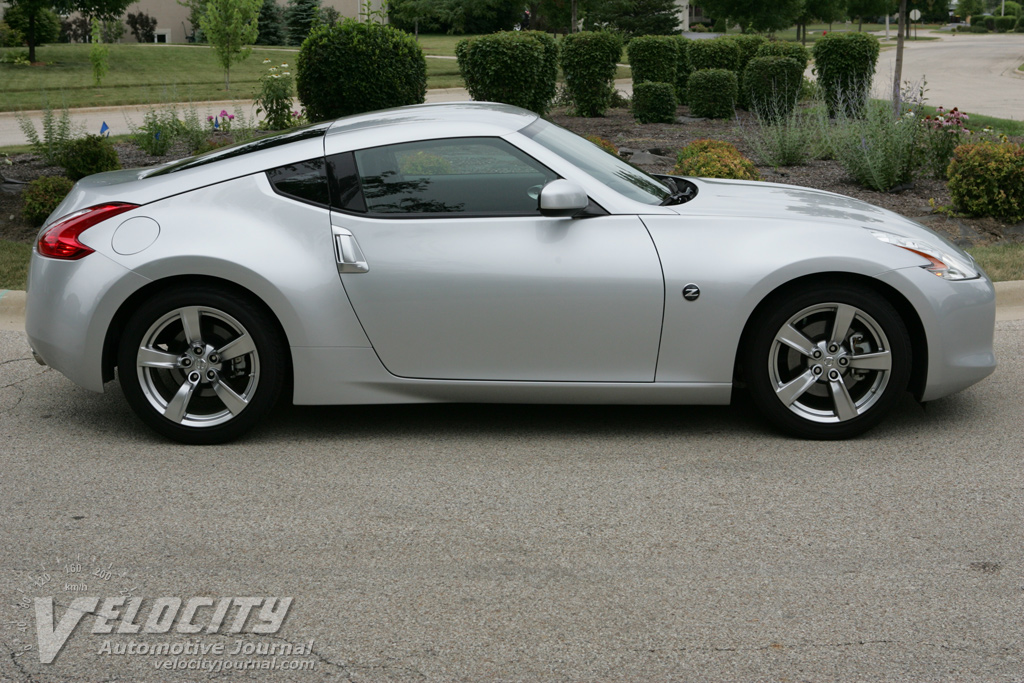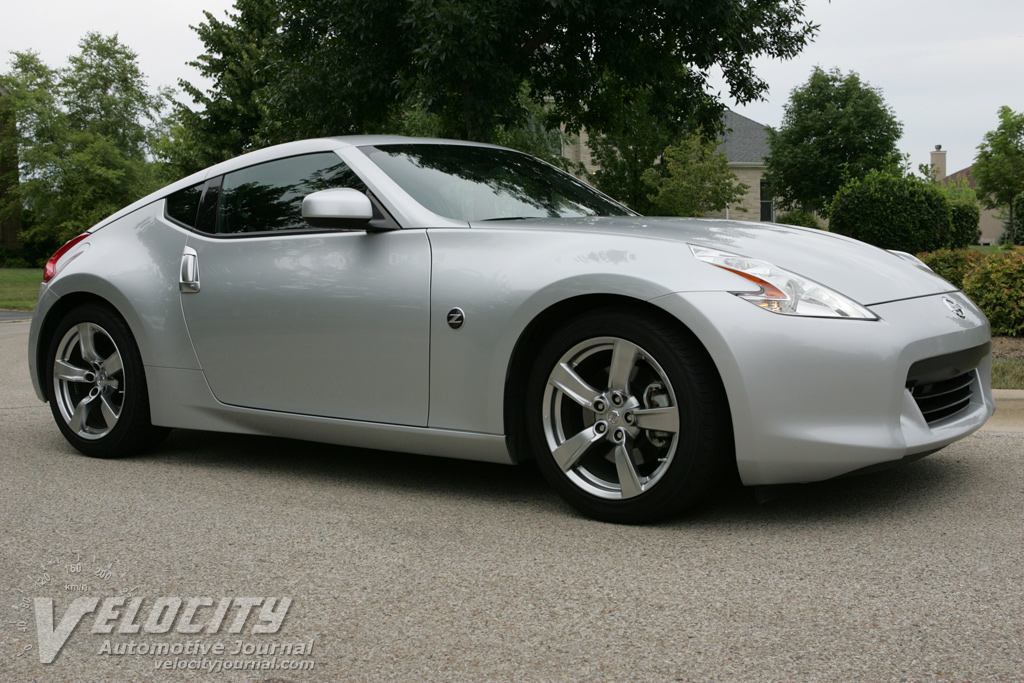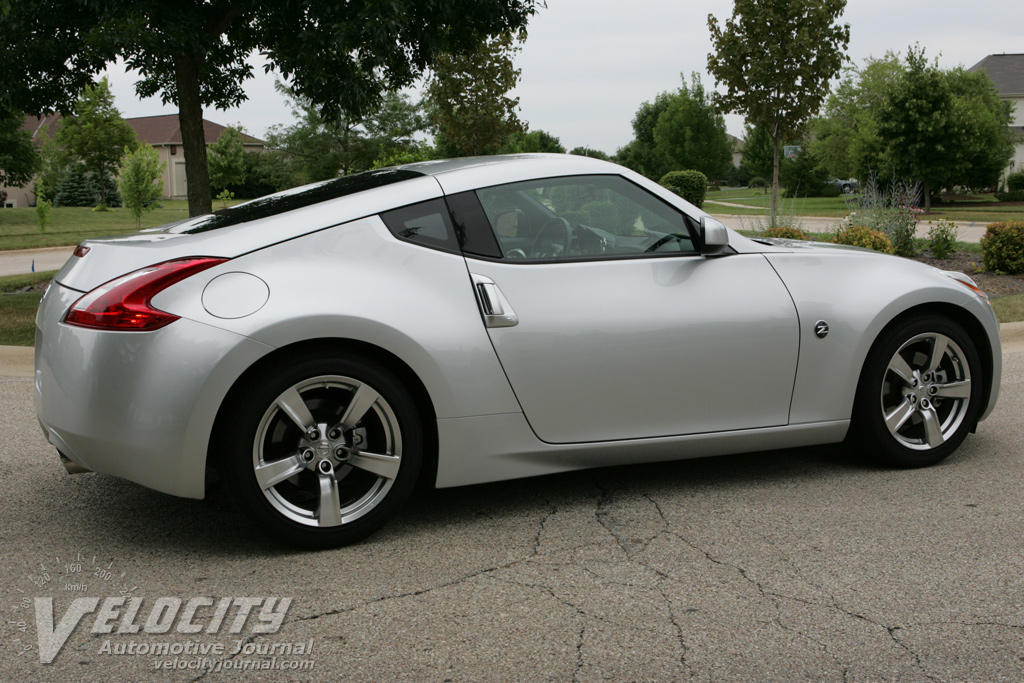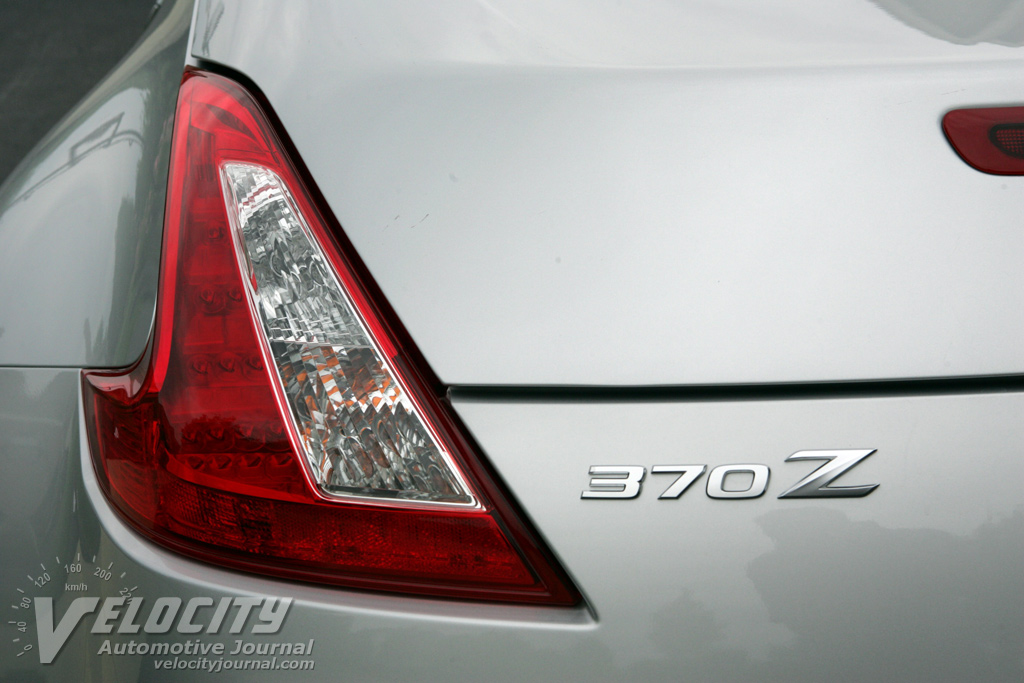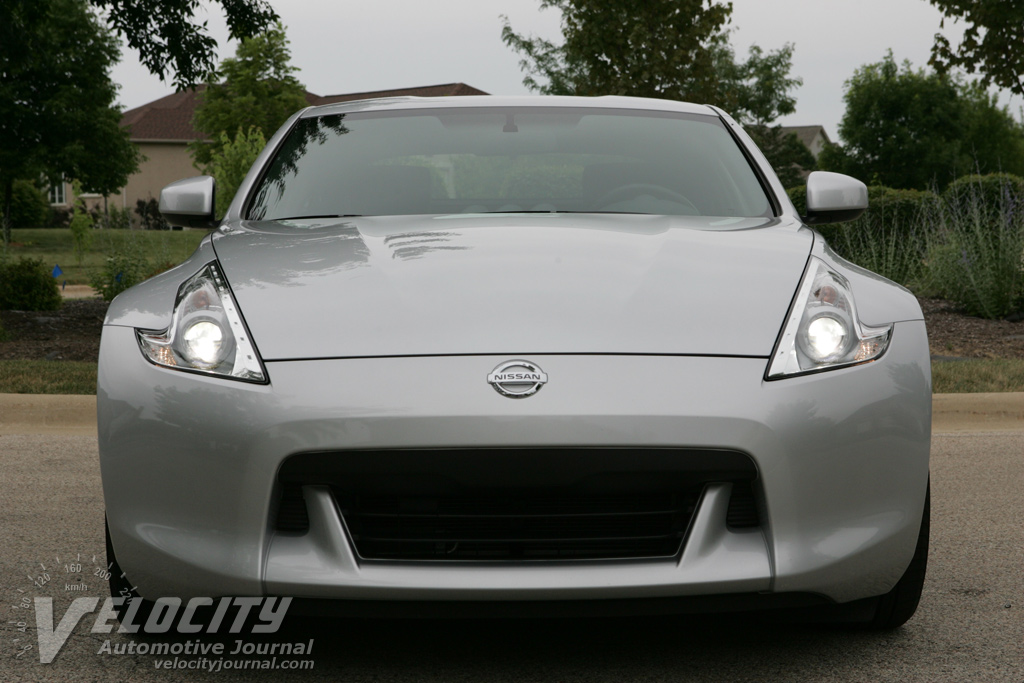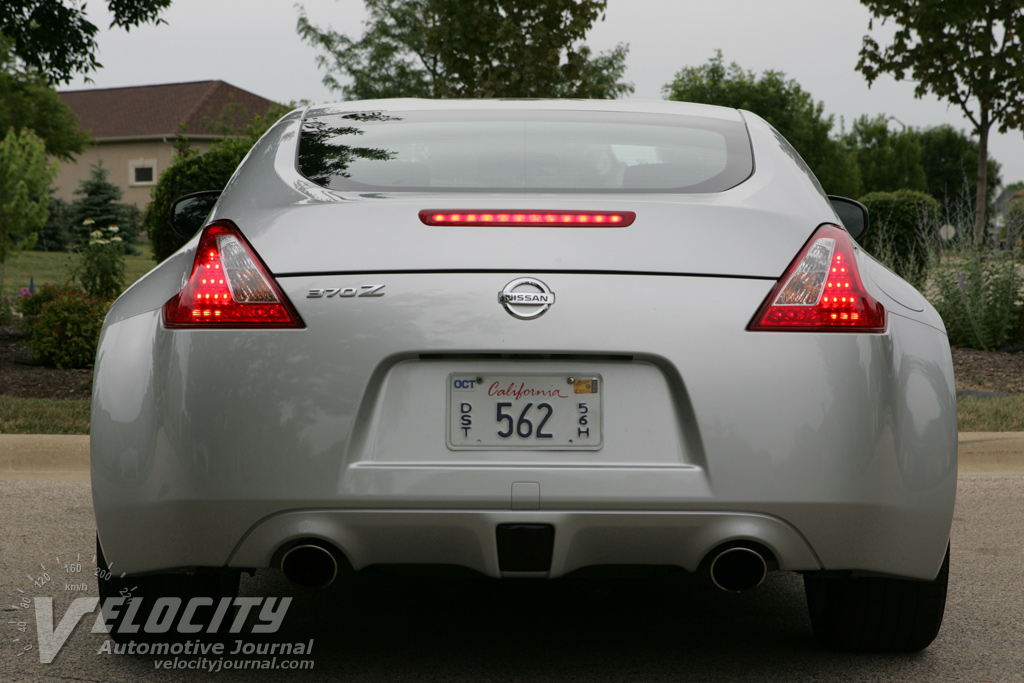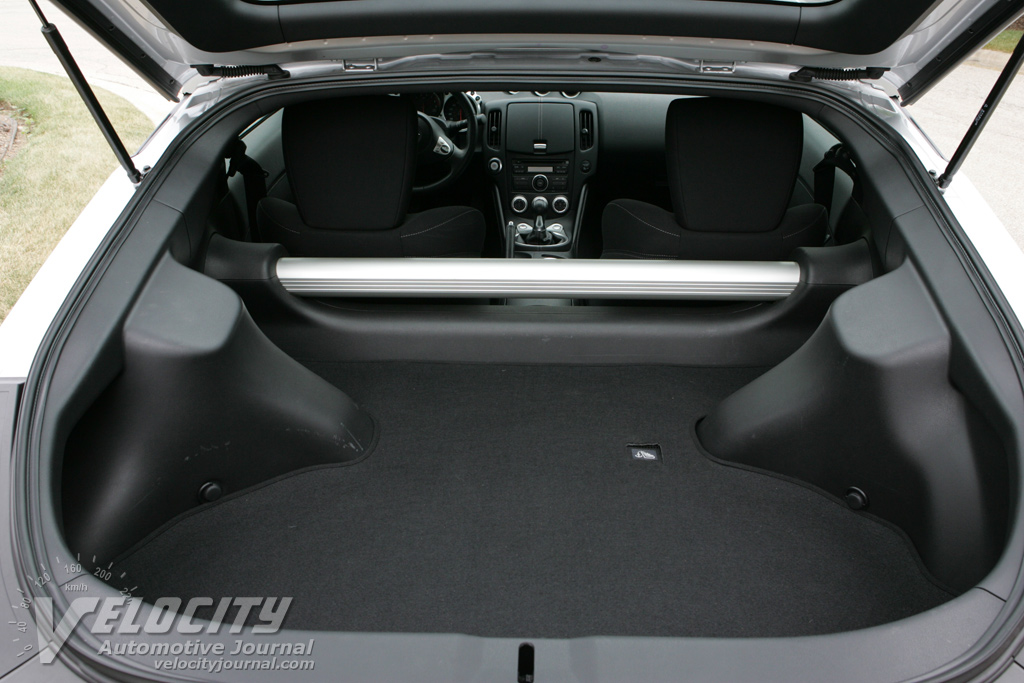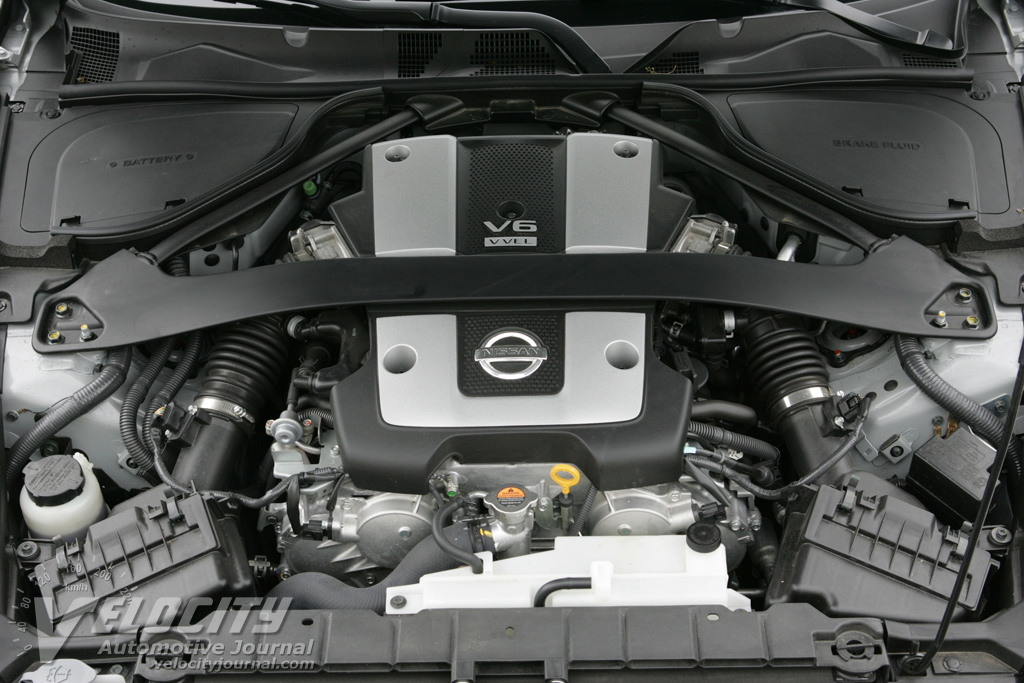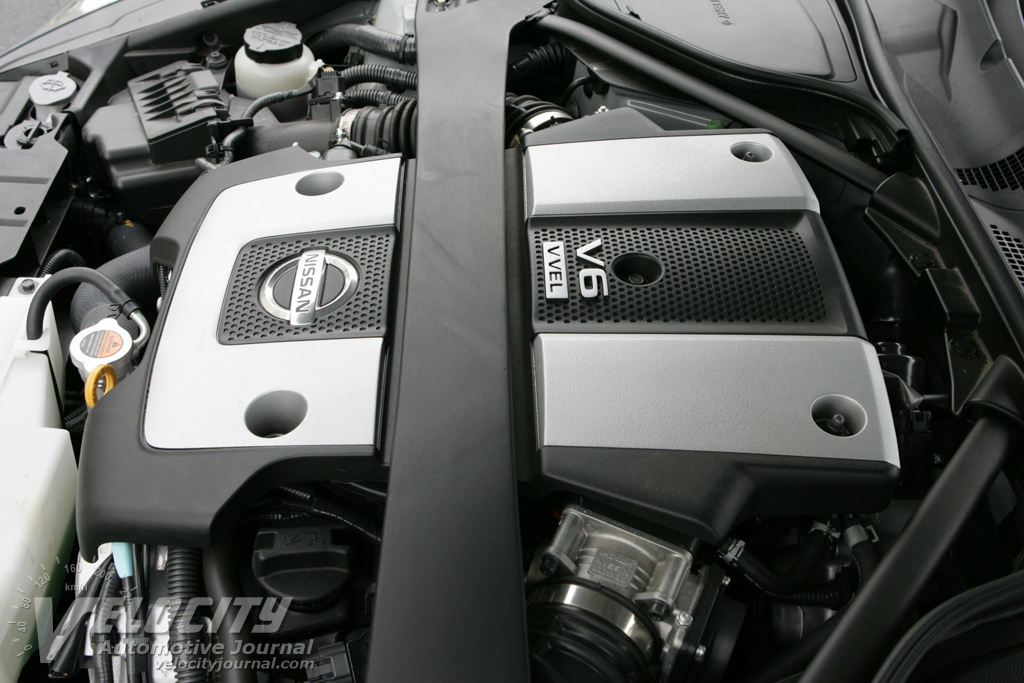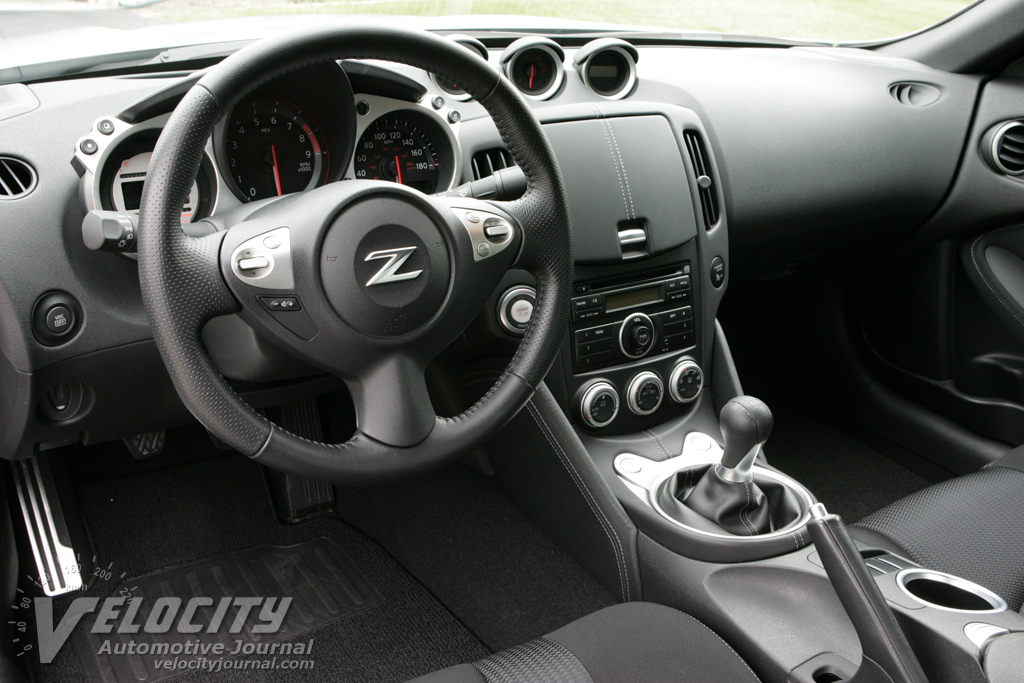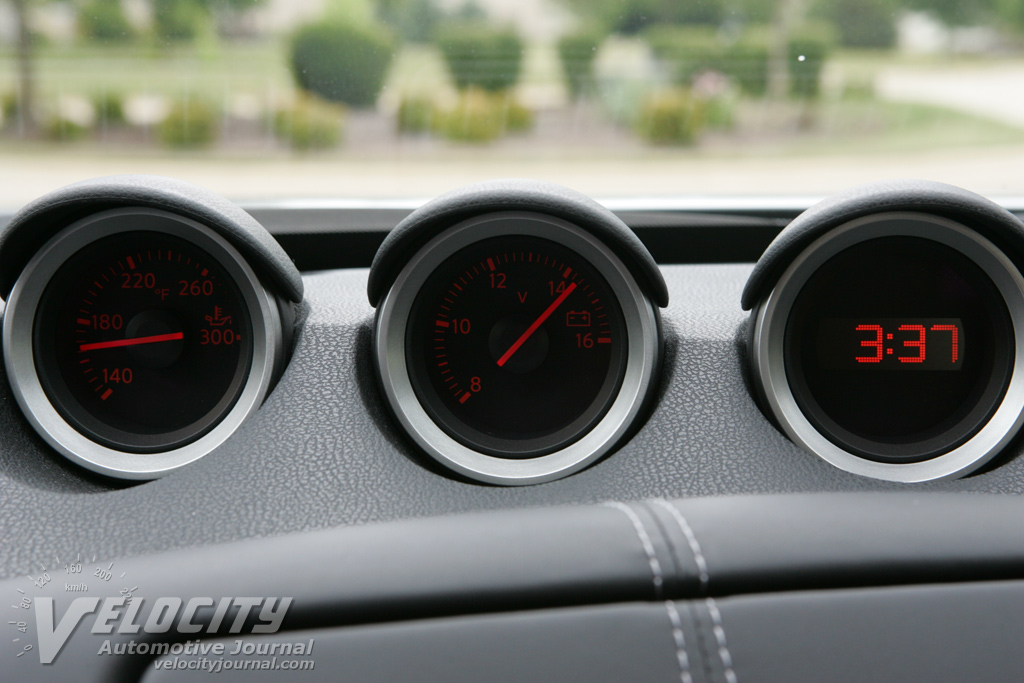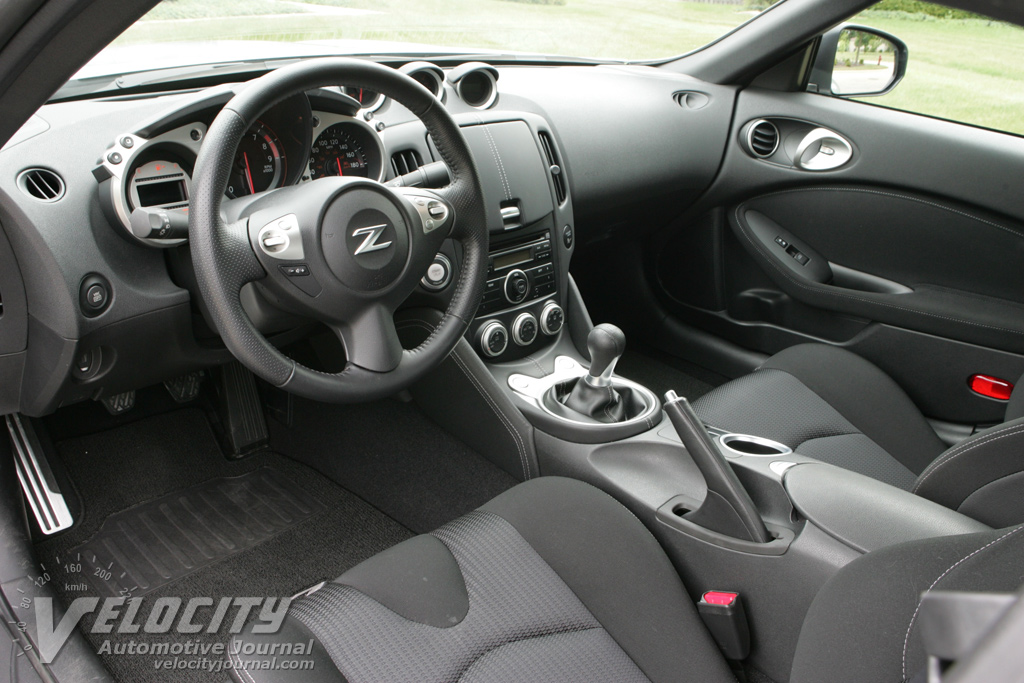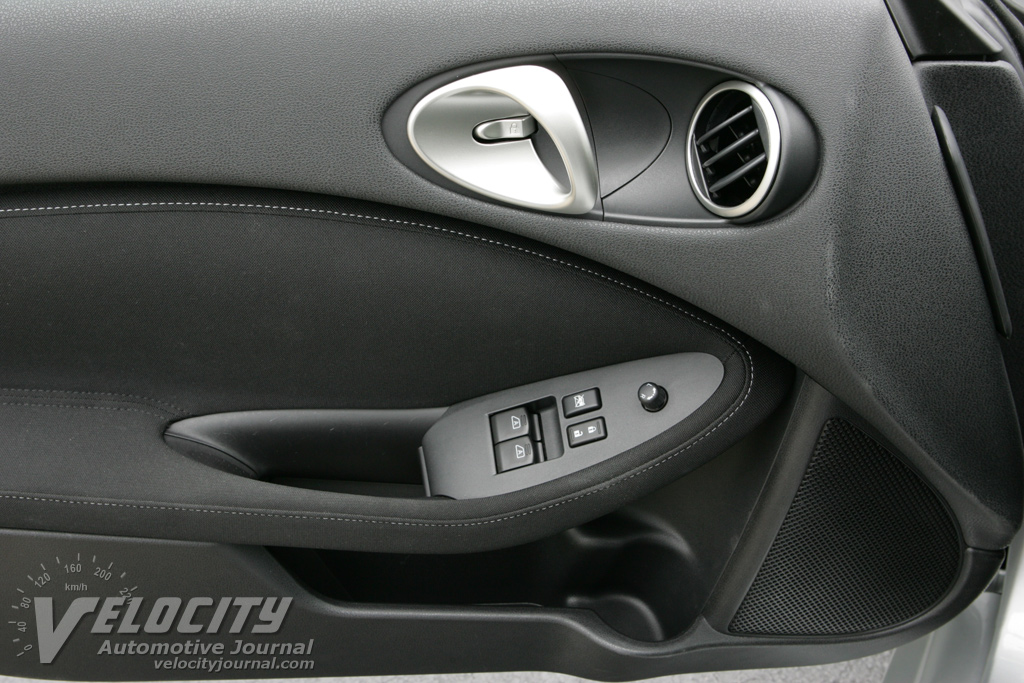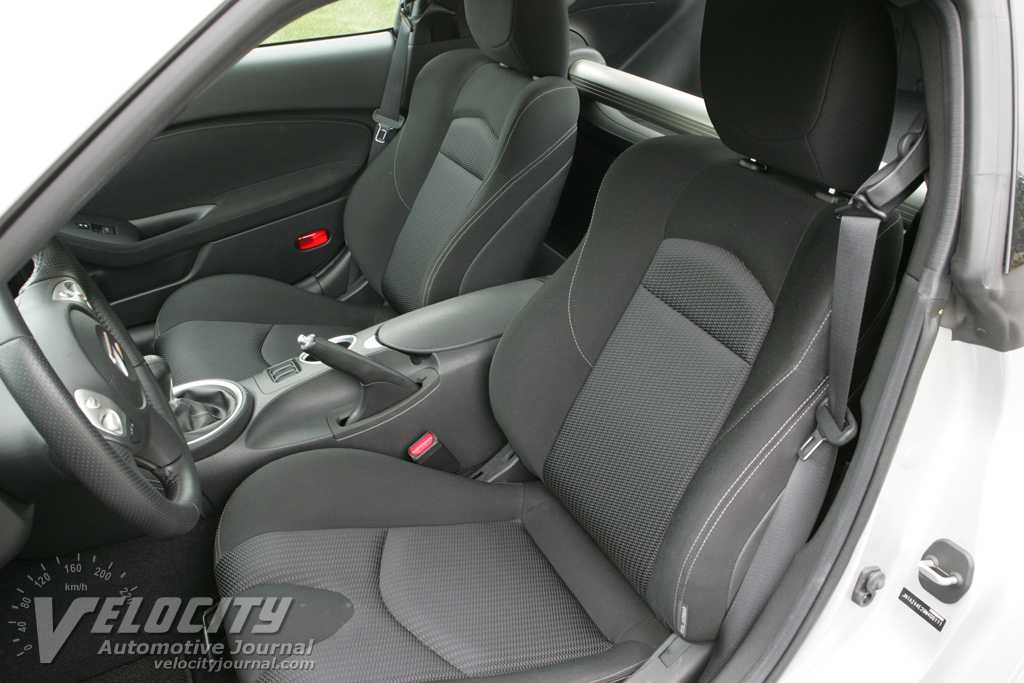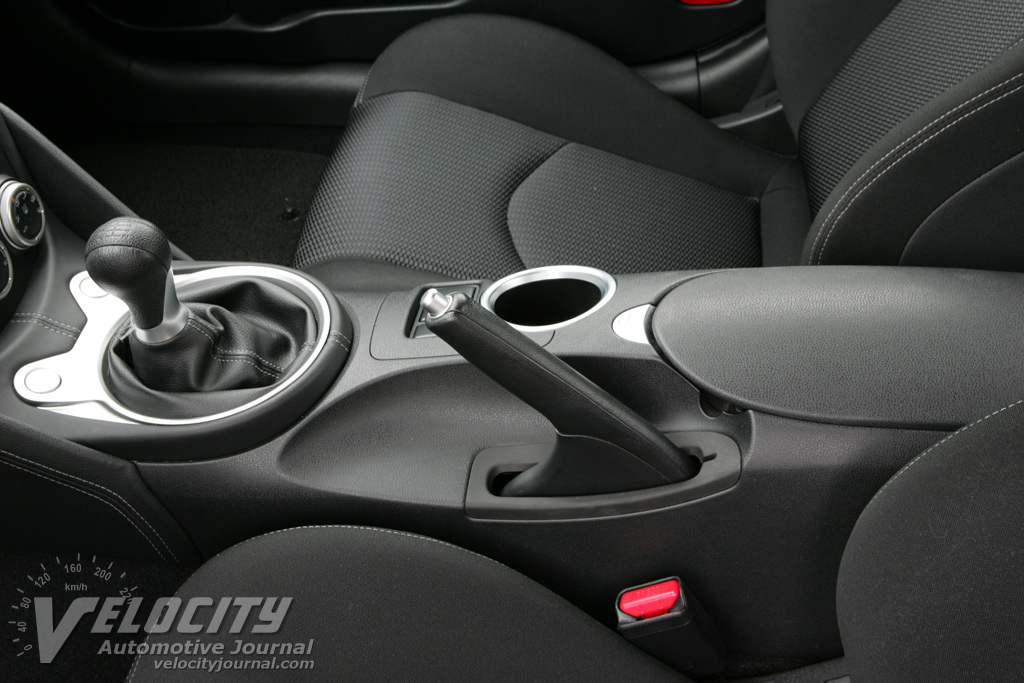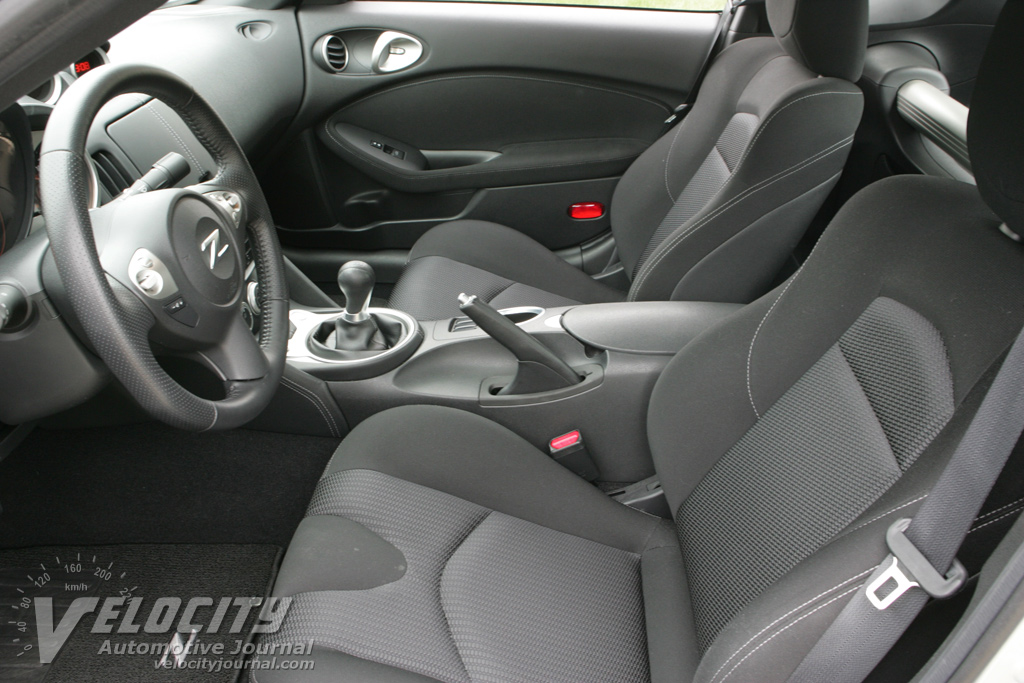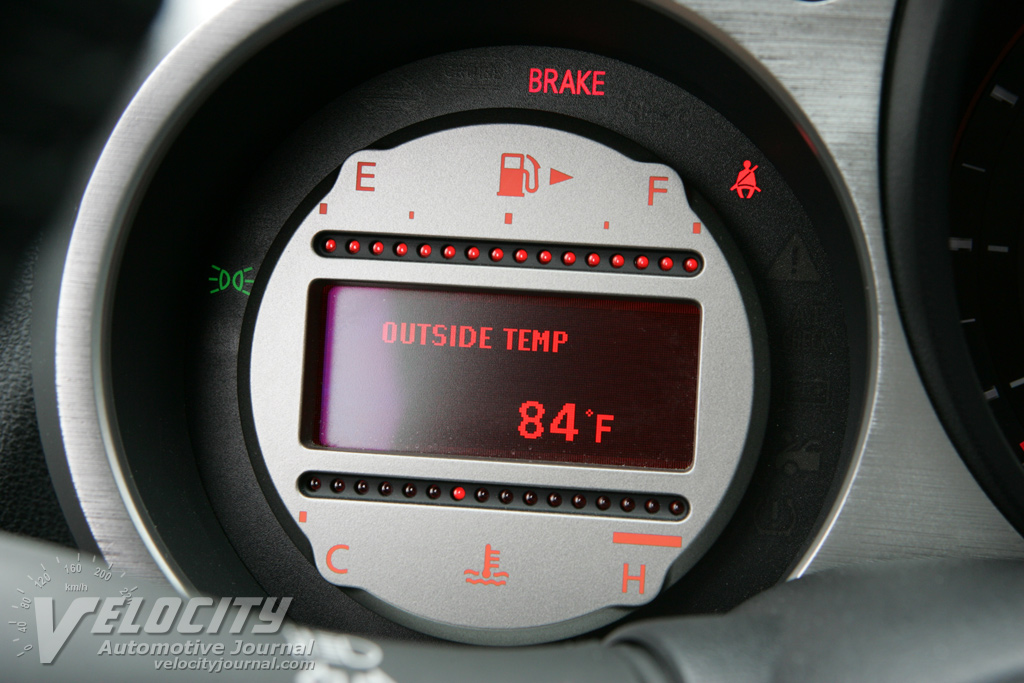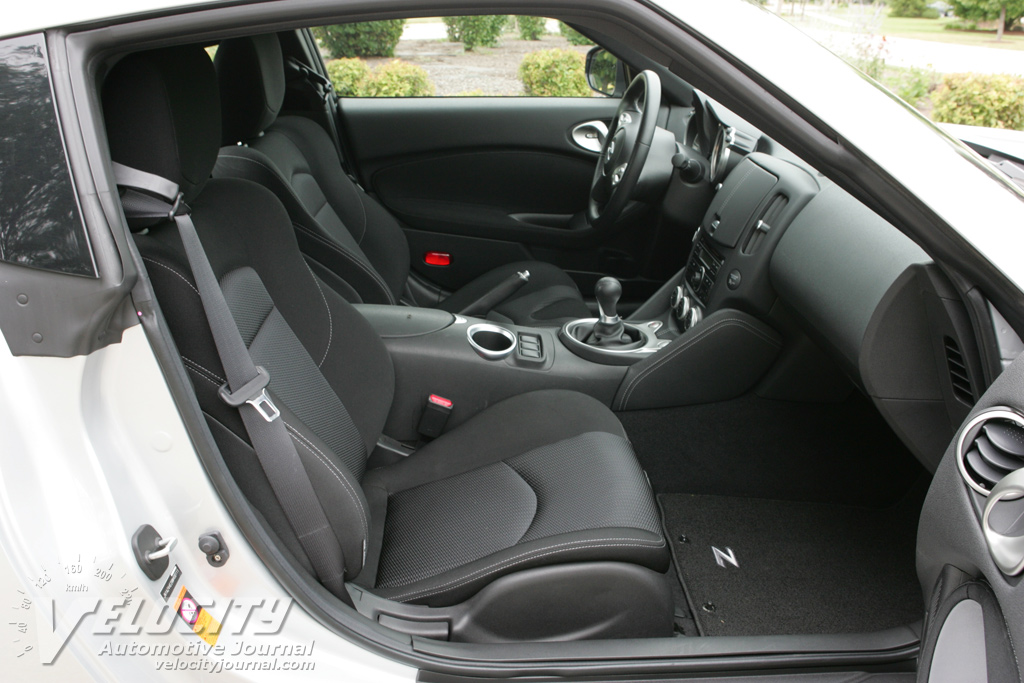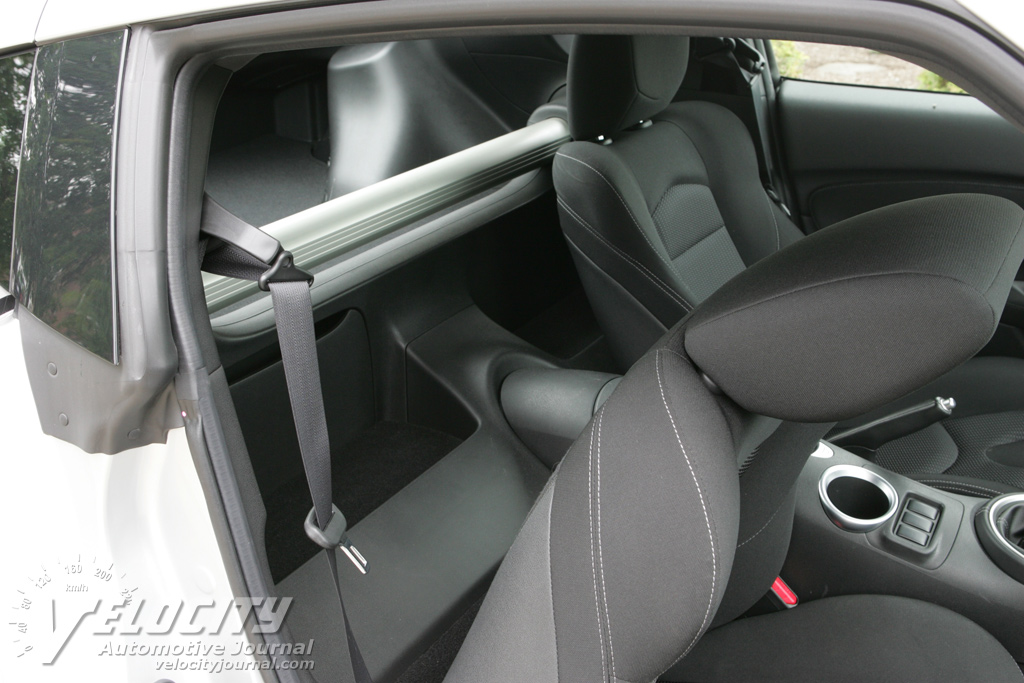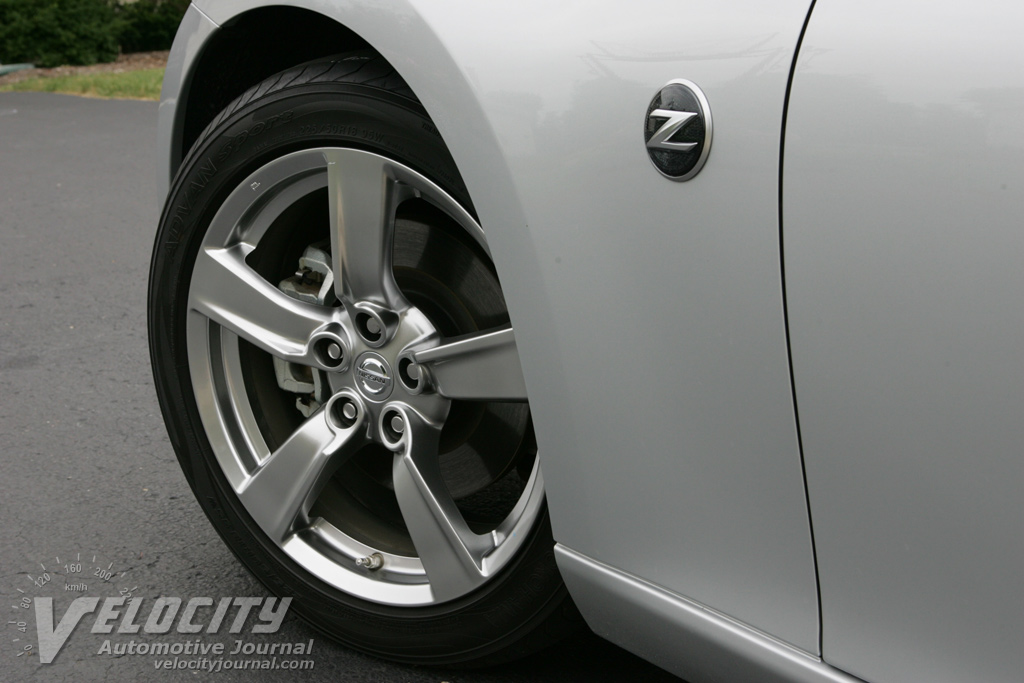2009 Nissan 370Z
07/21/2009
Shahed Hussan and Greg Godsell
The 350Z reestablished Nissan as the automaker offering arguably the best sports car value available. After a hiatus of six years, the 350Z replaced the striking 300ZX, last imported to the US in 1996. Yet despite its undeniable performance, the 350Z wasn't as polished as its predecessor, lacking the build quality of its predecessor. Nissan gradually addressed the shortcomings of the 350Z through its production run, but Z enthusiasts had to await the introduction of the 370Z for a thorough redesign.
Nissan has held the line on pricing on the 370Z, which is good news for enthusiasts on a budget. There are five 370Z Coupe variants: the base Coupe starts at $29,930. Next up is the 370Z Sport Package for $32,930. The Sport Package includes substantial upgrades: 4-piston front brakes, 2-piston rear brakes, SynchroRev Match (manual transmission), viscous limited-slip differential, 19-inch forged alloy wheels, plus front and rear spoilers. A more luxurious 370Z Touring ($34,460) adds heated leather seats, Bose audio system, and aluminum pedals. Adding the Sport Package to the Touring model hikes the sticker price to $37,460. At the top of the lineup is the NISMO 370Z ($39,130), which adds a host of NISMO suspension and body trim upgrades, but most importantly, bumps up power output to 350-bhp, an extra 18-bhp over the standard 332-bhp 3.7L V-6.
Oddly enough, the 370Z has few direct competitors in its price range. Its long-running rival, the Toyota Supra has been out of production since 2002, while the Mazda RX-8 simply cannot match the Z's raw acceleration. At first glance, the Hyundai Genesis Coupe seems to be an alternative, but the impressive Hyundai is just not as focused as the two-seat Nissan. Further up the price ladder are the Chevrolet Corvette, BMW Z4 and Porsche Cayman, but only the Corvette is quicker than the 370Z, while the Z4 and Cayman cannot surpass the Nissan in performance or handling. Muscle cars such as the Camaro SS and Mustang GT can match or surpass the 370Z in straight-line acceleration, but aren't intended to provide the handling prowess of a true sports car. The Infiniti G37 Coupe, which shares its driveline and platform with the 370Z is an alternative, although the Infiniti skews toward grand touring luxury.
Inside, the Z is mostly business, but with a few ergonomic quirks. Within the instrument binnacle is a centrally-mounted 9000-RPM tachometer, and a 180-MPH speedometer to the right. Instead of the expected analog fuel and coolant gauges, Nissan substituted tiny LED bar graphs. The shiny instrument bezel obscures the LEDs in bright sunlight, rendering the gauges essentially unusable. The driver is forced to rely on the amber multi-function display which shows miles-to-empty as an effective substitute for the fuel gauge. Across the top of the dash are gauges for oil temperature, voltmeter, and a digital clock. Ideally, the digital clock would swap places with the coolant temperature gauge on the instrument panel. On the leather-wrapped steering wheel spokes are basic audio controls, and nothing else. An engine start button resides just below the center vent; as long as the driver possesses the key fob, the V-6 will fire up by pressing the pushbutton for a few seconds.
Despite its low slung profile, the new Z provides ample headroom, even for 6 ft.-4 in. occupants. Legroom is equally generous, so taller drivers will not feel claustrophobic or cramped within the cockpit. The standard sport seats hug the torso, but the standard cloth upholstery is functional, if not luxurious. Optional perforated leather seats available on the Touring model improve interior ambiance substantially. Most interior surfaces that the driver touches like the dashboard and upper door panels are padded; a few exceptions include the rigid center console, and shiny plastic steering wheel hub. From the driver's seat, outward visibility over the gently sloping hood is exemplary, but the tiny side windows and fastback roofline present a huge blind spot that demand cautious lane changes.
As expected in a compact sports car, storage space is minimal; the center console bin barely holds a mobile phone, but a relatively capacious glove box and rear storage shelves are available for larger objects. A single cupholder sits behind the shifter, with pockets in each door for small drink bottles. Packing suitcases for a weekend trip is no longer a chore because Nissan eliminated the stiffening brace between the wheel wells. Several folding chairs will fit under the hatch with room to spare.
From an enthusiast's perspective, the 370Z surpasses its predecessor in the most important criteria: power. The longer stroke VQ37VHR powerplant incorporates Nissan's VVEL variable valve-timing technology to crank out an impressive 332-bhp @ 7,000 RPM and 270 lb.-ft. of torque at 5,200 RPM. Compared to the 306-bhp/268 lb.-ft. from the previous 3.5L VQ35HR engine, the additional horsepower from the bigger V-6 is confined at the upper reaches of the rev band, while the torque remains essentially unchanged. This V-6 has the power of a small V-8, if not the torque. Explosive acceleration is underfoot with every stab of the right pedal, kept in check by the standard VDC (Vehicle Dynamic Control). We found the VDC to be intrusive at times, curtailing throttle response prematurely; switching it off restored the linear throttle response that we prefer. Despite the extra power, the EPA highway fuel economy rating improves to 26 MPG for both the manual and automatic transmissions. In the city, the Z manages an unimpressive 18 MPG, but in light of the performance available, it doesn't seem all that bad.
With a curb weight of only 3,232 lb., the 370Z has an impressive power-to-weight ratio of 9.7 lb./bhp, versus 10.8 lb./bhp for the lightest 350Z model. For comparison, the Z is even lighter than a base Corvette Coupe which weighs in at 3,311 lbs. Front-to-rear weight distribution shifts slightly from 52/48 (350Z) to 53/47 (370Z). Although both the 350Z and 370Z have aluminum hoods, now the doors and hatch are also stamped from the lightweight metal; the resultant weight reduction of 88 lbs is a rarity among sports cars, which almost invariably become heavier in each succeeding generation.
One aspect of the Z that has not changed: road noise. The downside of low weight is an absence of sound deadening material, which becomes obvious every time the driver tromps on the throttle. Simply put, the 370Z is sometimes brutally loud; the mix of road, engine, and tire noise becomes deafening at times. Without the benefit of a bulkhead between the cargo compartment, tire and road noise reverberates within the Z, causing driver fatigue on extended road trips. Additional sound absorbing material would do much to reduce interior noise to an acceptable level comparable to other sports cars.
Nissan changed the front suspension layout from a multi-link setup to the classic double wishbone design. Aluminum components are used extensively to reduce weight, including a new aluminum front subframe. The rear suspension remains an aluminum multi-link design with a steel subframe. Coil springs, twin-tube dampers, and stabilizer bars are at all four corners. Standard fitment includes 18-inch alloy wheels shod with Yokohama ADVAN Sport tires: 225/50R18 (front) and P245/45R18 (rear). The optional Sport Package replaces the Yokohamas with wider P245/40R19 and P275/35R19 Bridgestone RE050A tires front and rear, respectively, on 19-inch RAYS alloy wheels.
As one might expect, the 370Z is in its element on sinuous pavement. The standard Yokohama tires had no difficulty keeping the rear end glued down as long as the pavement stays dry. The optional Bridgestones and the viscous coupling limited-slip differential should enhance straight-line acceleration, but owners living in damp climates should beware of potential hydroplaning issues with the wider tires. Unsurprisingly, the Z delivers a firm ride, bordering on harsh; potholed pavement occasionally causes the chassis to veer off course. However, when the asphalt is smooth, the stiff suspension, sharp turn-in response and superb cornering capability kept us searching for curves to conquer.
Nissan really raised the bar with the 370Z, providing an unmatched combination of performance and handling at a price point within reach for many enthusiasts. Aside from the Camaro and Mustang, the Z has no credible rivals anywhere near its price. Clearly, some sacrifices in overall refinement were required to achieve Nissan's aggressive price point, but for the dedicated few, the new Z is an exciting sports car that has few peers.

